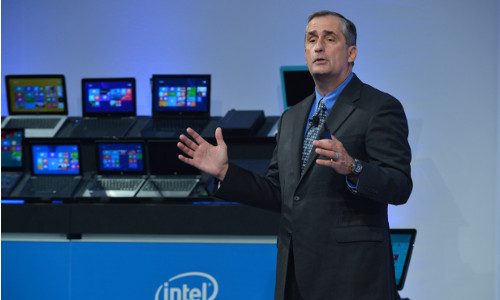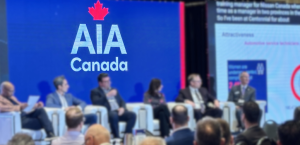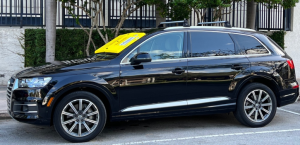By Jeff Sanford
Toronto, Ontario — December 11, 2017 — In this week’s Autonomous Report, Elon Musk’s reputation takes a hit, Hollywood eyes the potential in AVs, insurance companies get a warning, and much, much more!
-The Ontario Teachers’ Pension Plan was one of the major institutional investors buying up a stake in the ride-share company, Lyft. The company recently went to market for financing. Major investors like Kohlberg, Kravis and Roberts stepped up to take a stake in a company that many think will feature big in the new world of automated driving. The funding round also drew investments from Alphabet, Inc. (Google), which is developing an AV through its subsidiary company, Waymo.
-Over the past two years, the AV story has rapidly accelerated. It seems the idea that cars could drive themselves went from the realm of science fiction to a new big trend in the auto industry. According to a media report from Bloomberg, AVs have become so popular that almost, “… four dozen cities around the world are experimenting with them.” Along with individuals from the transit-focused think tank, the Aspen Institute reporters from Bloomberg compiled a list of all the cities testing or developing AVs. The two organizations interviewed public officials and reviewed media reports to identify the 47 cities that are currently hosting pilot programs involving AVs. According to the report, “An additional 22 cities have begun considering the regulatory, planning, and governance implications of AVs but have not yet agreed to trial them.”
-Chip-maker Intel and Warner Bros. announced a partnership last week to develop new technologies to bring entertainment options to the AV market. As the CEO of Intel, Brian Krzanich, put it in a recent interview, AVs represent a new type of “consumer space” for entertainment companies. That is, once people don’t have to drive, they’ll need to be entertained while travelling in their vehicle. As the Intel CEO, is quoted as saying, “… the rise of the AV industry will create one of the greatest expansions of consumer time available for entertainment we’ve seen in a long time.”
A media report notes that passengers will be a “… captive audience during the entire journey, so what better time to bombard you with even more ‘immersive entertainment experiences’?” Companies are now making plans to monetize the potential (hence the Intel, Warner Brothers deal).
According to a story, “With the average American spending more than 300 hours per year behind the wheel, entertainment execs hope that time can now be spent consuming content rather than driving. The Hollywood Reporter notes that some analysts predict that in-car streaming entertainment could result in as much as $200 billion per year in extra revenue.” Another Hollywood studio executive was quoted as saying, “Can the windshield be the movie screen of tomorrow?” The answer is clearly, “yes.” Possibilities for coming in-cabin entertainment could include virtual reality (VR) or augmented reality (AR), where digital entertainment is layered over real data from cameras and sensors.
Describing the potential of AR, a source in the story is quoted as saying, “For example, a fan of the superhero Batman could enjoy riding in the Batmobile through the streets of Gotham City, while AR capabilities render the car a literal lens to the outside world, enabling passengers to view advertising and other discovery experiences.” The broadcast industry is at work on a next-generation digital standard known as ATSC 3.0. This technical goal post will combine Internet capability, over-the-air signals, and Ultra HD 4K resolution.
“ATSC 3.0 is a very big [content] pipe into the car,” according to a source. Advertisers are already discussing the potential here. “We could deliver interactive, geo-located advertising based on nearby shops, restaurants and businesses,” says another source. How weird could it get? “If passenger biometric data [from devices that monitor the body] recognize that the passenger is generally too hungry to wait, he or she could be served with ads and offers for nearby restaurants,” according to the story. You can bet that, “The telcos, content providers, game developers and e-commerce companies will be transacting business within the car… We’ll also see new types of interfaces — we can even turn the whole interior of the car into a holodeck.” Will collision repair centres have to develop the skills to fix video screens? Arguably, yes.
-Tesla continues to screw up. The company’s roll out of its mass market Tesla 3 is way behind schedule. The factory where the car is being built is churning out far fewer vehicles than expected. Now the electric carmaker finds itself the target of a class action lawsuit filed by Tesla owners who paid extra to get full-AV software downloaded to their car, but have yet to receive the promised upgrade. It seems Elon Musk’s tendency to over promise and under deliver is the case once again.
Less than a year ago, Musk appeared at a press conference to announce that Tesla’s driver-assistance platform, Autopilot, “… was about to begin a transformation to fully autonomous driving.” According to one of several media reports, “Tesla was so confident [that a full automation would soon be achieved] that it started selling its ‘Full Self Driving’ feature for an additional $8,000 (U.S.) on any new Model X or Model S.” But as a major report from Bloomberg points out, “What followed were months of setbacks, delays, and in-house turmoil. A year later, there’s still no sign of Full Self Driving, and even the less ambitious ‘Enhanced Autopilot’ hasn’t quite reached parity with an earlier, discontinued version.
Now, Tesla owners who paid thousands of dollars for the options filed a class-action lawsuit, alleging they were tricked into buying a feature that doesn’t exist and — in some cases — an unsafe car.” According to the story, “Musk, well known for setting wildly aggressive deadlines,” has suffered a hit to his reputation as even basic crucial components such as Automatic Emergency Braking have been delayed. One of the complainants taking part in the class action suit is quoted as saying, “They are still selling the option to users that have no idea if and when it might ever become a reality. It changed the way I feel about the company.” According to one Tesla owner who ran the now discontinued version of the company’s AV software, “The system operated in an unpredictable manner, sometimes veering out of lanes, lurching, slamming on the brakes for no reason, and failing to slow or stop when approaching other vehicles and obstacles.” With major OEMs about to come to market with more advanced systems than the Tesla one (Musk’s don’t have Lidar) it seems Musk’s aggressive attempt to lead the market may see him end up at the end of the pack.
-A story in the magazine Harvard Business Review (HBR) takes on the issue of auto insurance in the age of automated vehicles. The report utilizes data from a survey conducted by consulting firm Accenture and the Stevens Institute of Technology. The survey finds that as many as 23 million fully autonomous vehicles will be traveling U.S. highways by 2035 (out of a total of 250 million cars and trucks in the U.S.).
According to the report, “This rapid growth of autonomous vehicles will involve a major shift, not only in our driving habits and patterns, but in the ownership of vehicles. We believe that most fully autonomous vehicles will not be owned by individuals, but by auto manufacturers such as General Motors, by technology companies such as Google and Apple, and by other service providers such as ride-sharing services.” The story goes on to repeat the common take on modern AVs, which is, that, “…unlike individual car owners — whose vehicles typically sit idle most of the time — fleet owners can send autonomous vehicles out on multiple trips on a 24-hour basis, amortizing the cost of ownership.”
These new fleet-based ownership organizations have already begun to take shape. GM has already announced an autonomous vehicle partnership with Lyft. Uber has a similar partnership with Volvo. But when it comes to insurance on these cars, there is going to be a real shift in the industry. According to HBR, “Since insuring privately owned vehicles is what the auto insurance industry has been all about, insurers have every reason to be concerned about their future growth and profitability. With fewer individual owners, there will be lower overall premiums. And since as many as 94 percent of accidents are attributed to human error, the number and severity of accidents and insurance claims will drop, also leading to lower premiums as insurers learn to price in accordance with real risk.”
The drop in individual premiums will begin in 2026, as large numbers of autonomous vehicles begin to appear, there could be as much as a $25 billion loss for insurers by 2035. This is significant for a roughly $200 billion market,” according to the big brains at HBR. Urbanization, ride-sharing, and a general lack of interest in car ownership among young drivers, will also cut demand and put pressure on premiums. Large commercial fleets such as UPS, FedEx, and other trucking businesses will likely move to autonomous vehicles at a rapid pace according to the story.
One potential revenue stream would be to insure for product liability. According to the HBR story, “Auto-related sensors and chips are expensive, but the real risk for manufacturers is the potential for failure through software bugs, memory overflow, algorithm defects, and the resulting massive liability. Insuring this new tech will offer an annual revenue potential of $500 million in premiums for property and casualty insurers. All-in, these alternative revenue streams could generate $81 billion in new revenue through 2026, or $15 billion per year from 2020 to 2026. This would allow insurers to, “…more than offset the losses in premiums expected through 2050.”
Some of the other key ideas in the story include the following:
- “Playing effectively in the AV market means being able to control data generated by AVs and by the communications as well as the software systems which support them. Market participants who can collect, organize and analyze this data will have inherent advantages over those with less developed capabilities.”
- Insurers need to, “… develop the needed actuarial framework and models. We have already seen partially autonomous safety features such as automatic emergency braking systems change the safety profile of newer vehicles. Insurers should be using sophisticated actuarial and modeling techniques to be ready as vehicles add more and more autonomous features.”
- Insurers need to think about new business models. “Currently, insurers whose revenues derive primarily from personal automobile policies have an expertise in insuring thousands of small risks. Such insurers may have to transform themselves into large commercial insurers writing policies on a small number of very large risks. Insurers remaining in the personal lines market will have to re-think areas including product development, policy administration, and distribution.”





































